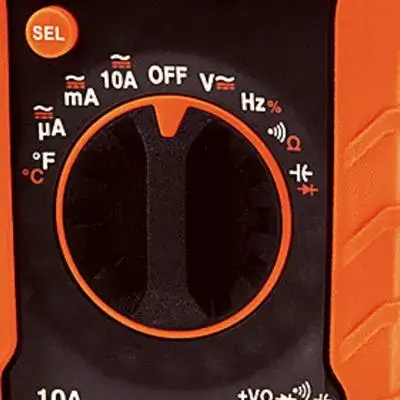What does 0l mean on a multimeter ? A multimeter is essential for any electrician or anyone interested in electrical engineering. It can measure current, voltage and resistance, temperature, capacitance, and continuity. Different scales on the multimeter will allow you to measure various parameters accurately.
Understanding what does 0l means on a multimeter is very important when using a multimeter, as it relates to the resistance of electrical components. In this article, I will explain what 0L means on a multimeter and how it is used.
Understanding Ohms Law and resistance
To understand 0L on a multimeter, it’s important first to understand Ohms Law and the concept of resistance. Resistance measures the opposition that a component or material offers to the flow of electricity. Ohm’s law states that the current (I) flowing through a circuit is proportional to the voltage (V) applied across it and inversely proportional to the resistance (R). This can be expressed mathematically as V = I x R or I = V/R.
Exploring the different scales on a multimeter
A multimeter has a dial (or knob) with different scales that can be used to measure various parameters. The most common scales are V (volts), A (amps), Ohms, Voltmeter, and milliamp. To measure the resistance on the multimeter, you would typically use the ohm scale or an auto-ranging digital multimeter. The Ohm scale ranges from 0 to infinity on an analog multimeter, but it can range from 0 to 200 Megohms on a digital multimeter.

What does “0L” mean on a Multimeter?
If you don’t know what does 0l mean on a multimeter. You will be clear after reading this guide. The term “0L” stands for “open loop.” It indicates that the circuit being tested is open (not closed), and no current flows through it. This means that the resistance of the component or material being tested is infinite, as there is no connection between the two points. The multimeter will display “0L” when it cannot detect a change in resistance between the two points. This can happen if the circuit is open or if there is a broken wire.
In conclusion, 0L means an open loop on a multimeter and indicates that the resistance of a component or material is infinite because there is no current flowing through it. Understanding Ohms Law and resistance are important for anyone using a multimeter, as
An in-depth explanation of 0L on a multimeter
What does 0l mean on a multimeter? On a multimeter, “0L” stands for Open Loop. This is an indication that there is no current flowing through the circuit being measured. This usually indicates a broken wire or a bad connection, as no current can flow through the circuit. A failed component, such as a resistor or capacitor, can also cause this.
How to use a multimeter safely and accurately
When using a multimeter, it is important to use it safely and accurately. Always ensure that the probe tips are properly connected to the device being tested to avoid any electrical shocks or damage. Additionally, when taking readings, always double-check your results before proceeding with any repairs.
Common mistakes made when using a multimeter and how to avoid them
One of the most common mistakes when using a multimeter is incorrectly connecting the leads. Doing this can lead to incorrect readings and damage to the tested device. It is also important to ensure that you use the correct settings for the type of measurement you are taking. For example, if measuring voltage, ensure the multimeter is set to the AC or DC scale accordingly.
Conclusion
Multimeters are an invaluable tool when troubleshooting electrical systems or components. Understanding what does 0l mean on a multimeter and how it relates to resistance and Ohm’s Law is essential to use this tool correctly and safely. With practice and a good understanding of electricity and electronics, anyone can become proficient at using a multimeter. This guide has described what is multimeter. How to use it. The things that should be kept in mind while using a multimeter.
FAQs
Q: What does 0L mean on a multimeter?
0L stands for Open Loop on a multimeter and indicates no current flowing through the measured circuit.
Q: How to use a multimeter safely and accurately?
When using a multimeter, it is important to ensure that the probe tips are properly connected to the device being tested to avoid any electrical shocks or damage. Additionally, always double-check your results before proceeding with any repairs.
Q: What are common mistakes made when using a multimeter?
Common mistakes made when using a multimeter include connecting the leads incorrectly and using incorrect settings for the type of measurement being taken.
Q: What is the importance of understanding 0L on a multimeter?
Understanding 0L on a multimeter and how it relates to resistance and Ohm’s Law is essential to use this tool correctly and safely. With practice and a good understanding of electricity and electronics, anyone can become proficient at using a multimeter.
Q: What is the best way to learn to use a multimeter?
The best way to learn to use a multimeter is by following instructions and practicing each step. Reading basic electrical theories such as Ohm’s Law can help you better understand your measurements. With enough practice and patience, anyone can proficiently use a multimeter.
